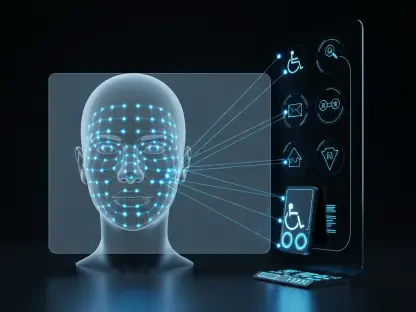The European Union continues to elevate its standards for cybersecurity with the passage of the Cyber Resilience Act (CRA). The CRA, passed in 2024, sets a challenging framework for the security of digital products, particularly for manufacturers of embedded devices. The legislation, enforceable by December 2027, mandates comprehensive security measures, including secure firmware updates, vulnerability management, incident reporting, and essential cryptographic techniques. As the countdown to compliance begins, developers are tasked with navigating these stringent requirements amidst looming penalties for non-compliance.
The Challenge of Meeting CRA Mandates
The need to adhere to the CRA’s stipulations introduces several intricacies and challenges for developers and manufacturers. Embedded device security often necessitates a holistic approach, encompassing device identity management, secure boot processes, and the continuous updating of firmware-over-the-air (FOTA). This requires substantial time, resources, and expertise. Managing these processes manually or with disparate tools can significantly increase the risk of security lapses and vulnerabilities, leading to non-compliance and potentially severe penalties.
Developers must also contend with the CRA’s directive for robust cryptographic protections, including those resilient to the emergent threat of quantum computing. The integration of post-quantum cryptographic techniques becomes indispensable to future-proof devices against increasingly sophisticated cyber threats. Long-term protection necessitates employing cryptographic standards that not only meet current security expectations but also anticipate future vulnerabilities that could be introduced by advances in quantum computation.
Enhancing Security with the QuarkLink Platform
Enter Crypto Quantique’s QuarkLink Hybrid PQC security platform. This cloud-based solution, which made its debut at Embedded World 2025, is tailored to facilitate developer compliance with the CRA. Seamlessly integrating a full-stack approach to cybersecurity, QuarkLink handles device identities from manufacturing through to decommissioning. The platform supports secure boot mechanisms, FOTA updates, and a range of cryptographic operations, effectively bridging the gap between the complex requirements of the CRA and the practical needs of developers.
A standout feature of QuarkLink is its adoption of hybrid post-quantum cryptography (PQC). By combining the X25519 and Kyber768Draft00 algorithms, the platform delivers enhanced protection against both current and future cyber threats. This strategic integration ensures that devices remain secure even as quantum computing capabilities evolve, providing a resilient shield against potential cryptographic breaches. The significance of this forward-thinking approach cannot be understated in an era where quantum computing looms as a potential disruptor to traditional cybersecurity measures.
Integration and Efficiency
QuarkLink’s integration with specific microprocessor and microcontroller platforms, supported through comprehensive Software Development Kits (SDKs), streamlines the development process. Partnerships with industry leaders such as Renesas, STMicroelectronics, and Intel ensure that the platform is optimized for varied hardware environments. These tailored SDKs mitigate the workload on developers by providing pre-verified and thoroughly tested solutions that are ready for integration. According to Crypto Quantique’s CEO, Shahram Mossayebi, tasks that historically spanned months can now be accomplished in a matter of days, dramatically accelerating time-to-market and reducing associated costs.
The efficiency gains are particularly significant when considering the CRA’s timelines. The act stipulates that products must be remotely update-ready by September 2026. QuarkLink’s secure FOTA, combined with features for vulnerability monitoring and automated certificate management, directly addresses this requirement. The platform offers centralized device management and automated lifecycle governance, essential components for maintaining a robust and consistent security posture. Additionally, QuarkLink supports zero-trust architecture, further enhancing its security capabilities.
Bridging the Developer and IT Security Divide
An essential benefit of QuarkLink is its ability to bridge the gap between embedded developers and IT security teams. This collaboration is crucial for the seamless integration of security measures into continuous integration and continuous deployment (CI/CD) toolchains. Such integration reduces the risk of security mishaps, including inadvertent exposure of cryptographic keys, which could otherwise undermine the integrity of the entire security infrastructure. By aligning the workflows of development and IT security teams, QuarkLink fosters a cohesive approach to maintaining device security throughout the product lifecycle.
Moreover, the platform embodies a critical alignment with industry best practices. It establishes a centralized framework for cybersecurity governance, enabling automated lifecycle management of keys, certificates, and device identities. This operational synergy not only simplifies compliance but also significantly enhances the resilience of devices against potential threats. For developers, this means more time to focus on innovation and application-specific concerns, rather than being mired in the complexities of security protocols.
Sustainable Security Solutions
The European Union continues to elevate its standards for cybersecurity with the passage of the Cyber Resilience Act (CRA). The CRA, passed in 2024, establishes a rigorous framework for the security of digital products, focusing primarily on manufacturers of embedded devices. This legislation, set to be enforceable by December 2027, requires comprehensive security measures, such as secure firmware updates, vulnerability management, incident reporting, and essential cryptographic techniques. As the deadline for compliance approaches, developers must navigate these stringent requirements to avoid potential penalties for non-compliance. The act aims to bolster the overall security of digital infrastructure, ensuring that products are resilient against cyber threats. The CRA is a significant step in the EU’s ongoing efforts to enhance cybersecurity and protect both consumers and businesses. This legislation reflects the increasing importance of robust cybersecurity measures in today’s technology-driven world, keeping the EU at the forefront of global cybersecurity standards.









